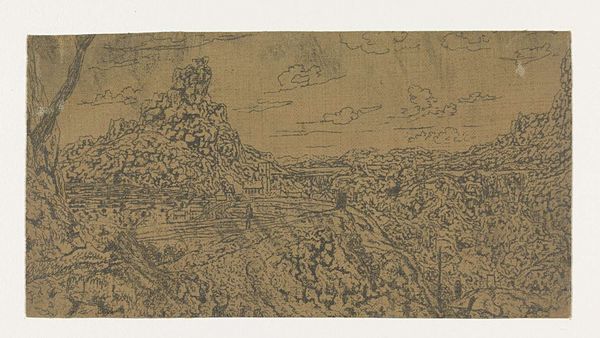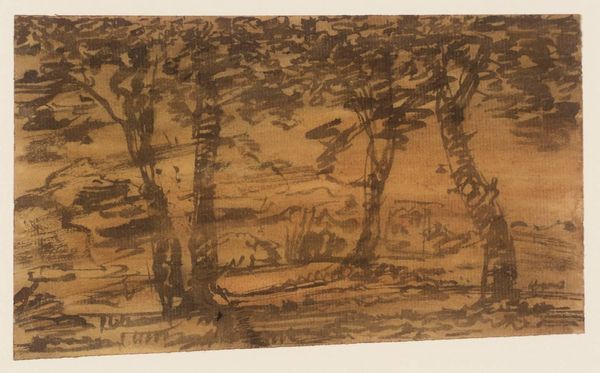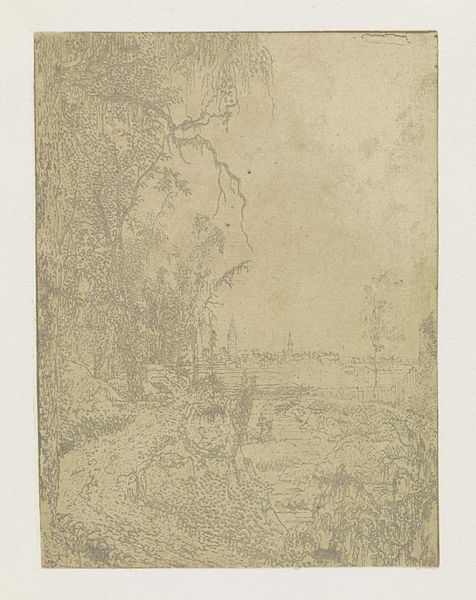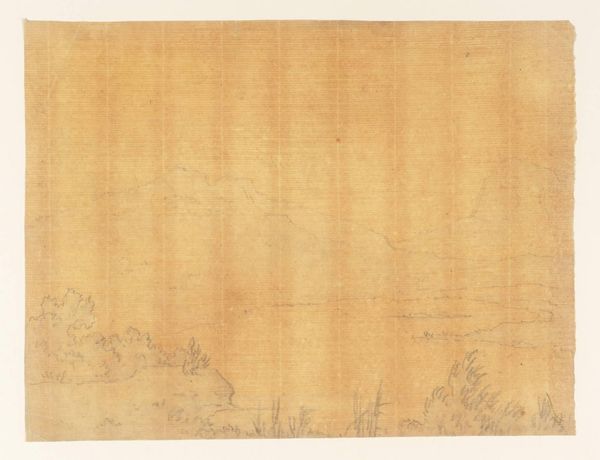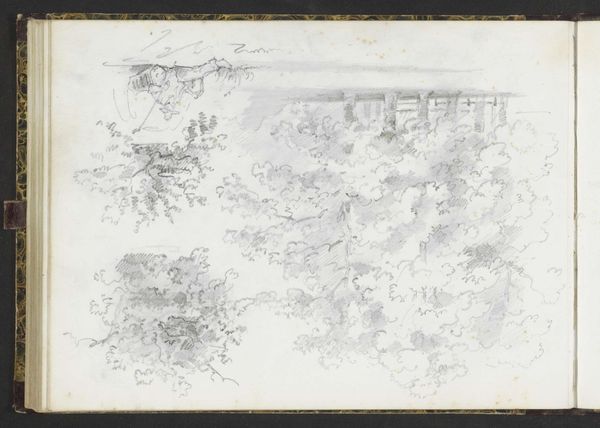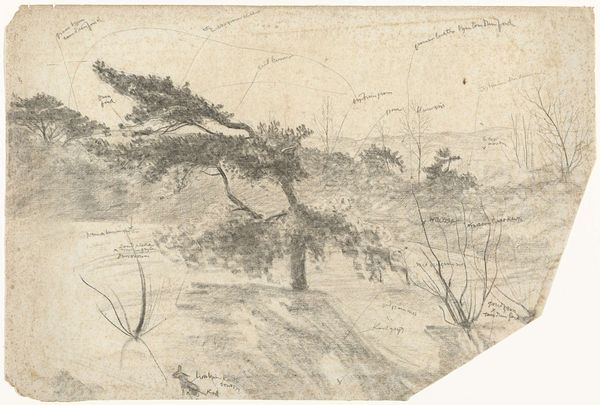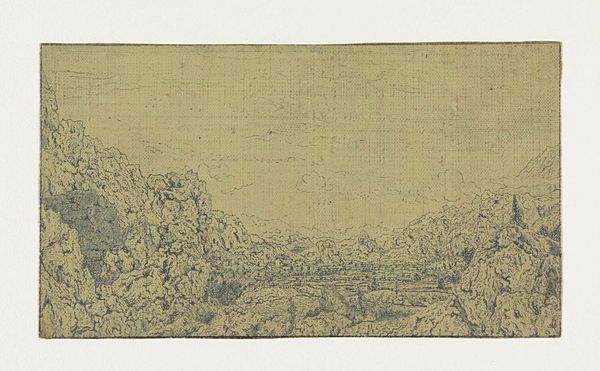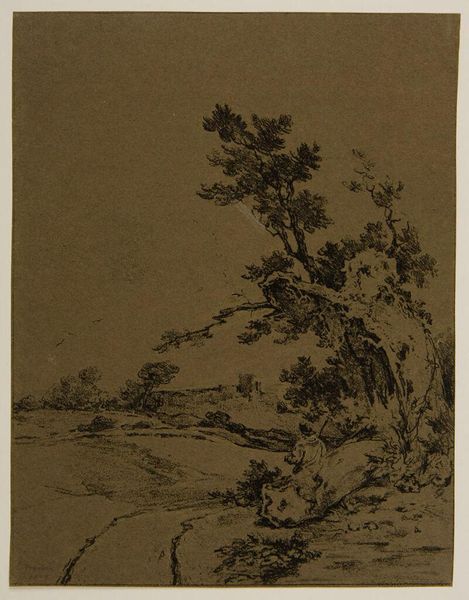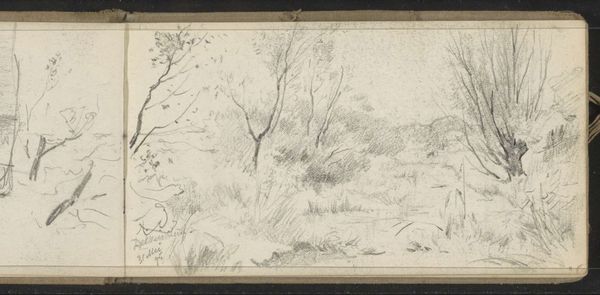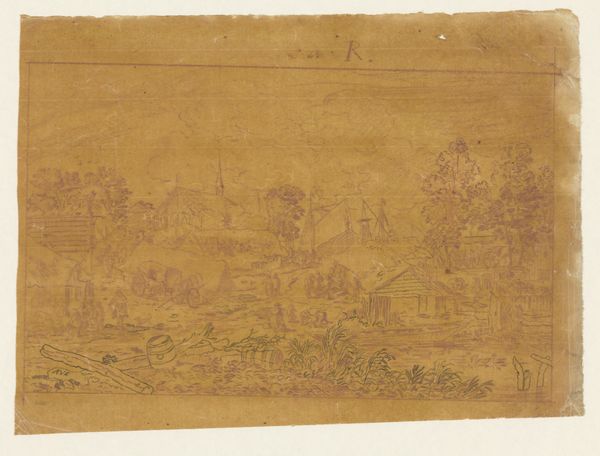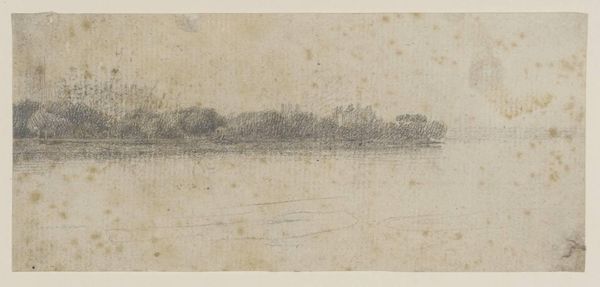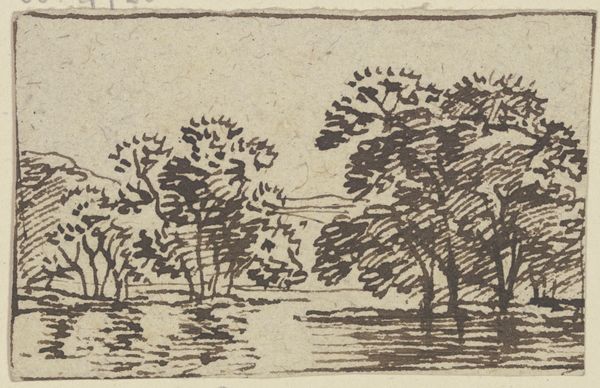
print, etching, paper
#
baroque
#
dutch-golden-age
# print
#
etching
#
landscape
#
paper
Dimensions: height 75 mm, width 134 mm
Copyright: Rijks Museum: Open Domain
Curator: Before us is "Landscape with an Oak Tree and a Distant View," an etching made by Hercules Segers, around 1618 to 1622. It's a fantastic example of Dutch Golden Age landscape art, and you can currently see it on display here at the Rijksmuseum. Editor: My immediate response is a feeling of remoteness. The tonality, almost sepia-like, the distant, blurry cityscape—it's a world viewed through a scrim, as if a memory. Curator: Absolutely. Segers was fascinated by experimenting with printmaking. He wasn’t just making copies; he was exploring the emotional depth an image could carry. That oak, for instance—sturdy and solitary. Trees often symbolize endurance, connection to the earth…a kind of silent witness. Editor: Yes, the oak is centrally placed, but note the almost sketch-like quality. The rough lines of the tree trunk are not idealized but almost brutally realistic. Then, contrast that texture with the smooth, flat tone of the sky. That contrast emphasizes the roughness, the imperfection of the human perspective. Curator: And that city on the horizon… it represents civilization but feels diminished by nature’s scale. It invites reflection on mortality, the ephemerality of human achievements in the grand sweep of time. Dutch Golden Age landscapes weren’t merely pretty scenes, were they? Editor: No, certainly not! And observe the limited tonal range, verging almost on monochrome. This flatness is intrinsic to its affect. It pulls the viewer in by minimizing distraction, encouraging intense scrutiny of its surfaces and lines. Curator: Thinking about the symbols here—the enduring oak, the distant city—the landscape evokes the interplay between time, memory, and the continuous cycle of life and decline. Perhaps this print captured something very personal about Segers himself. Editor: Maybe, but what is fascinating is the print’s formal simplicity. It is this austere structure that encourages viewers to layer their meanings onto Segers’s carefully composed terrain. Curator: True. We might each project our experiences onto this image. But perhaps the landscape tradition can echo beyond personal contexts; we see it through cultural memory itself. Editor: An excellent thought. It seems even after a discussion about formalism, this simple scene encourages us to think outside itself.
Comments
No comments
Be the first to comment and join the conversation on the ultimate creative platform.
